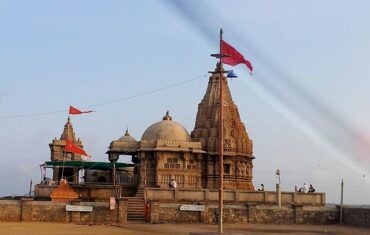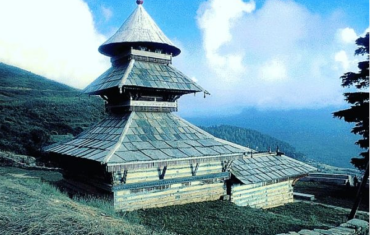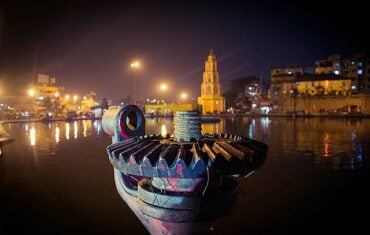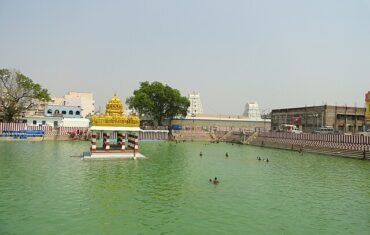Ashoka Shilalekh, or the rock edicts of Ashoka, are ancient inscriptions that were carved on rocks and pillars by the Mauryan emperor Ashoka, who ruled over most of India and beyond in the 3rd century BCE. The rock edicts are the oldest surviving records of Ashoka’s reign and reveal his policies, achievements, and ideals. The rock edicts also provide valuable information about the history, culture, and society of ancient India and its neighboring regions. Famous tourist attraction in Junagadh, Vsiit during One Day Junagadh sightseeing Trip By Private Cab
Location of Ashoka Shilalekh
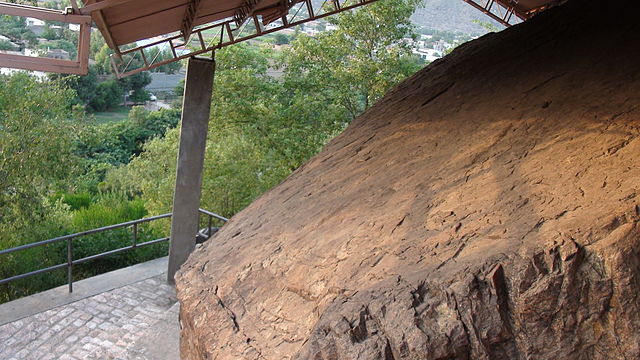
Ashoka Shilalekh are found in various locations across India, Bangladesh, Afghanistan, Pakistan, and Nepal. They cover a vast area that reflects the extent of Ashoka’s empire and his influence. Some of the major sites where Ashoka Shilalekh are found are:
- Dhauli: This is a hill near Bhubaneswar in Odisha, where Ashoka fought the bloody Kalinga war that changed his life and led him to embrace Buddhism. Here, Ashoka inscribed his 13th rock edict, which expresses his remorse for the war and his desire to spread peace and dharma (righteousness) among all beings.
- Shahbazgarhi: This is a village in Mardan district of Khyber Pakhtunkhwa province in Pakistan, where Ashoka carved 14 rock edicts in Kharosthi script, a variant of Aramaic script used in northwest India. The edicts deal with various topics such as administration, justice, welfare, morality, and religion.
- Mansehra: This is another village in Khyber Pakhtunkhwa province in Pakistan, where Ashoka engraved 14 rock edicts in Kharosthi script on a large boulder. The edicts are similar to those at Shahbazgarhi, but with some variations.
- Kalsi: This is a town in Dehradun district of Uttarakhand state in India, where Ashoka inscribed 14 rock edicts in Brahmi script, an ancient Indian script used in most parts of India. The edicts are similar to those at Dhauli, but with some additions and modifications.
- Girnar: This is a hill near Junagadh in Gujarat state in India, where Ashoka carved 14 rock edicts in Brahmi script on a huge rock. The edicts are similar to those at Kalsi, but with some differences.
- Sopara: This is an ancient port town near Mumbai in Maharashtra state in India, where Ashoka erected a pillar with two edicts in Brahmi script. The edicts declare Sopara as a free city and exempt it from taxes and duties.
- Erragudi: This is a village near Kurnool in Andhra Pradesh state in India, where Ashoka inscribed four rock edicts in Brahmi script on a small rock. The edicts deal with Ashoka’s concern for the welfare of animals and humans.
Timing / Entry Fees Ashoka Shilalekh
Most of the sites where Ashoka Shilalekh are found are open to the public throughout the year. The timings may vary depending on the location and season. Generally, the sites are open from sunrise to sunset. There is no entry fee for visiting most of the sites. However, some sites may charge a nominal fee for parking or photography.
How to Reach Ashoka Shilalekh
The sites where Ashoka Shilalekh are found are accessible by road from the nearest cities or towns. One can take a bus, taxi, or auto-rickshaw to reach the sites. Some sites may require a short walk or climb from the road. The nearest railway stations and airports to some of the major sites are:

- Dhauli: The nearest railway station is Bhubaneswar (8 km), which is well connected to other cities by trains. The nearest airport is Biju Patnaik International Airport (11 km), which has flights from domestic and international destinations.
- Shahbazgarhi: The nearest railway station is Mardan (13 km), which has trains from Peshawar and other cities. The nearest airport is Bacha Khan International Airport (60 km), which has flights from domestic and international destinations.
- Mansehra: The nearest railway station is Haripur (40 km), which has trains from Rawalpindi and other cities. The nearest airport is Islamabad International Airport (120 km), which has flights from domestic and international destinations.
- Kalsi: The nearest railway station is Dehradun (49 km), which is well connected to other cities by trains. The nearest airport is Jolly Grant Airport (82 km), which has flights from domestic destinations.
- Girnar: The nearest railway station is Junagadh (5 km), which has trains from Ahmedabad and other cities. The nearest airport is Rajkot Airport (103 km), which has flights from domestic destinations.
- Sopara: The nearest railway station is Nalasopara (3 km), which has trains from Mumbai and other cities. The nearest airport is Chhatrapati Shivaji International Airport (55 km), which has flights from domestic and international destinations.
- Erragudi: The nearest railway station is Kurnool (40 km), which has trains from Hyderabad and other cities. The nearest airport is Rajiv Gandhi International Airport (240 km), which has flights from domestic and international destinations.
Things to Do / Must See Ashoka Shilalekh

Ashoka Shilalekh are not only historical monuments, but also sources of inspiration and wisdom. Some of the things to do and see at the sites are:
- Read the Edicts: The edicts are written in ancient scripts and languages, such as Brahmi, Kharosthi, Aramaic, and Greek. However, there are translations and explanations available at the sites or online. Reading the edicts can give an insight into Ashoka’s personality, policies, achievements, and ideals. The edicts also contain valuable teachings on ethics, morality, peace, harmony, tolerance, and compassion.
- Admire the Architecture: The edicts are carved on rocks and pillars with skill and precision. The rocks and pillars are of different shapes, sizes, and colors. Some of them have elaborate carvings, sculptures, or designs on them. The edicts also reflect the influence of various cultures and regions on Ashoka’s empire.
- Enjoy the Scenery: The sites where Ashoka Shilalekh are found are often surrounded by natural beauty and scenic views. Some of them are located on hills, mountains, or valleys. Some of them are near rivers, lakes, or forests. Some of them are in ancient towns or villages. Enjoying the scenery can add to the experience of visiting the sites.
Nearby Tourist Places Ashoka Shilalekh

There are many other tourist places to explore near the sites where Ashoka Shilalekh are found. Some of the nearby tourist places are:
- Dhauli: Dhauli is famous for its Shanti Stupa or Peace Pagoda, a white dome-shaped structure that was built by the Japanese Buddhist organization Nipponzan Myohoji in 1972. The stupa symbolizes peace and harmony and has statues of Buddha and Ashoka. Dhauli also has a temple dedicated to Lord Shiva and a museum that displays artifacts related to Ashoka and Buddhism.
- Shahbazgarhi: Shahbazgarhi is known for its ancient Buddhist stupas and monasteries that date back to the 2nd century BCE. The stupas are made of stone and brick and have carvings of Buddha and other figures. The monasteries have cells for monks and courtyards for meditation.
- Mansehra: Mansehra is a popular hill station that offers panoramic views of the Himalayas and the Karakoram ranges. Mansehra also has a museum that showcases the history and culture of the region. Mansehra is close to Balakot, a town that was devastated by the 2005 earthquake but has been rebuilt with the help of various organizations.
- Kalsi: Kalsi is a picturesque town that lies at the confluence of the Yamuna and Tons rivers. Kalsi also has a heritage park that displays replicas of Ashoka’s rock edicts and other historical monuments. Kalsi is near Chakrata, a hill station that is famous for its waterfalls, caves, temples, and forests.
- Girnar: Girnar is a sacred hill that is revered by Hindus, Jains, and Buddhists. The hill has five peaks and has many temples and shrines on its slopes. The hill also has a natural spring called Gomukhi Ganga. Girnar is near Junagadh, a city that has many historical attractions, such as Uparkot Fort, Mahabat Maqbara Palace, Jama Masjid, and Darbar Hall Museum.
- Sopara: Sopara is an ancient port town that was once a major trade center and a Buddhist hub. Sopara also has a stupa that was built by Ashoka’s son Mahinda, who spread Buddhism in Sri Lanka. Sopara is near Mumbai, the financial capital of India and a cosmopolitan city that has many attractions, such as Gateway of India, Marine Drive, Elephanta Caves, Haji Ali Dargah, Siddhivinayak Temple, and Bollywood.
- Erragudi: Erragudi is a village that has a rich cultural heritage and a rural charm. Erragudi also has a temple dedicated to Lord Rama that was built by Ashoka’s grandson Dasharatha, who was a devotee of Rama. Erragudi is near Kurnool, a city that has many historical and natural attractions, such as Konda Reddy Fort, Oravakallu Rock Garden, Belum Caves, Rollapadu Wildlife Sanctuary, and Srisailam Dam.
Significance of Ashoka Shilalekh
Ashoka Shilalekh are significant for history, culture, and tourism in India and beyond. The rock edicts reveal the legacy of Ashoka, who was one of the greatest rulers and reformers of ancient India. Ashoka transformed his empire from a warlike state to a peaceful and prosperous one. He also promoted the values of dharma, which include ethics, morality, peace, harmony, tolerance, and compassion.
He also supported various religions and cultures and sent emissaries to spread his message to other regions. The rock edicts also preserve a unique combination of scripts and languages that reflect the diversity and richness of ancient India and its neighboring regions. The rock edicts also offer a glimpse into the life and times of Ashoka and his people.
FAQ’s
Q: What are Ashoka Shilalekh?
A: Ashoka Shilalekh are ancient inscriptions that were carved on rocks and pillars by the Mauryan emperor Ashoka in the 3rd century BCE.
Q: Where are Ashoka Shilalekh found?
A: Ashoka Shilalekh are found in various locations across India, Bangladesh, Afghanistan, Pakistan, and Nepal.
Q: What do Ashoka Shilalekh contain?
A: Ashoka Shilalekh contain Ashoka’s policies, achievements, and ideals. They also contain valuable teachings on ethics, morality, peace, harmony, tolerance, and compassion.
Q: In which scripts and languages are Ashoka Shilalekh written?
A: Ashoka Shilalekh are written in Brahmi, Kharosthi, Aramaic, and Greek scripts and languages.
Q: Why are Ashoka Shilalekh important?
A: Ashoka Shilalekh are important for history, culture, and tourism. They reveal the legacy of Ashoka, who was one of the greatest rulers and reformers of ancient India. They also preserve a unique combination of scripts and languages that reflect the diversity and richness of ancient India and its neighboring regions. They also offer a glimpse into the life and times of Ashoka and his people.
Conclusion
Ashoka Shilalekh are amazing attractions that mesmerize visitors with their beauty and history. The rock edicts are the oldest surviving records of Ashoka’s reign and reveal his policies, achievements, and ideals. The rock edicts also provide valuable information about the history, culture, and society of ancient India and its neighboring regions. The rock edicts also contain valuable teachings on ethics, morality, peace, harmony, tolerance, and compassion.
If you are planning to visit India or any of the countries where Ashoka Shilalekh are found, don’t miss the opportunity to visit them and experience their history and wisdom. Book your ticket now and enjoy a memorable trip to Ashoka Shilalekh. 🙌

